Hongbenghe is directly at the border to Myanmar – before COVID-19, it was easy enough to walk across the border on foot, but now a monstrous long steel and barbed-wire fence separates the two countries. Very appealing to tourists nostalgic for that iron curtain feeling.
This is the home of the Rusty-naped Pitta, admittedly one of the less glamorous of the family, particularly the subspecies found in Yunnan, but still a nice sight and still a pitta.
Given that according to the HBW, the species prefers dense primary and secondary montane forests, the note that the bird also forages among kitchen waste (in the same HBW entry) seems somewhat incongruous.

The scientific species name of the Rusty-naped Pitta oatesi honors Eugene William Oates (1845-1911), an English civil servant in India and naturalist. He published a number of books on birds of India and Burma, making me wonder how hard all these overseas civil servants really worked in their day jobs.

It seems this species is shy even by pitta standards – the HBW calls it a “very shy and secretive pitta, easily overlooked” and says that it is “very rare in China (S. Yunnan)”.

Hongbenghe is a good place to see several laughingthrush species:
The Red-tailed Laughingthrush, Trochalopteron milnei, is named after a contemporary of Mr. Oates, the French professor Alphonse Milne-Edwards (1835 – 1900). His obituary was published in Nature.
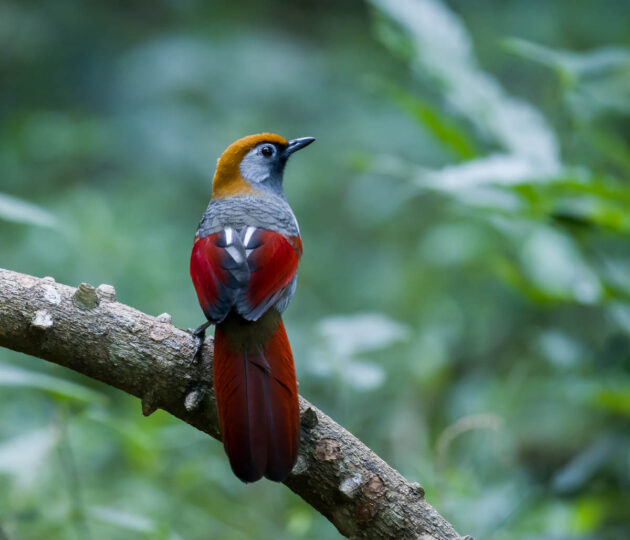
It is a bit worrying that while the Basel Zoo is listed by Google as having a page on the Red-tailed Laughingthrush, that page itself does not seem to exist anymore, and the species is not listed among the inhabitants of the aviary of the zoo. Quite possibly, this laughingthrush is now locally extinct in Switzerland or at least in Basel.

And of course, this entry on the Red-tailed Laughingthrush would not be complete without mentioning a paper that presumably nobody will ever read: “The complete mitochondrial genome of red-tailed laughingthrush ( Garrulax milnei )”. As usual, there are many authors (8 in this case), and all seem to be Chinese (also as usual). I wonder why.

The White-crested Laughingthrush looks like it could easily play a cameo role in a Wham! video.

(Note to those readers who do not know Wham!: Congratulations, you are much younger than me and got spared a lot of truly awful music).

This laughingthrush is a cooperative breeder – nestlings are fed by all members of a group, often 6-12 (not just 2 as in Wham!):

“A female may share a nest with another, and 3 or more adults may take turns incubating the eggs and feeding the chicks.” (source).

Survival rates of chicks increase when there are helpers present – and if in captivity this is not an option, humans can also take the place of helpers (source).

In Singapore, the White-crested Laughingthrush is widespread despite not being native and has some characteristics of an invasive species (source).

The scientific name of the Grey-sided Laughingthrush, caerulatus (dark blue), makes much more sense to me than the common name.
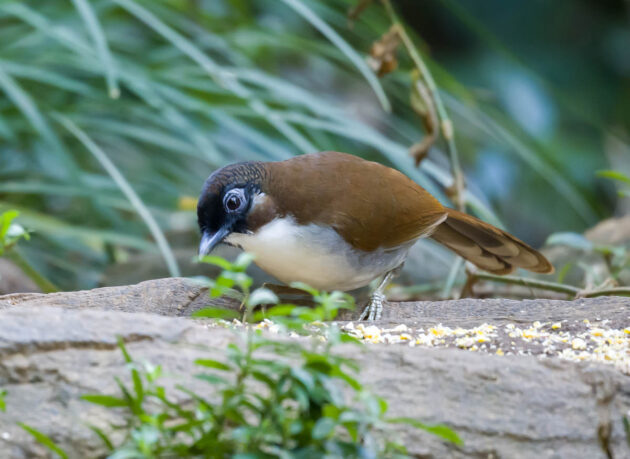
Strangely, the usually fairly accurate eBird description also fails to mention the beautiful blue around the eyes of the species: “Dark rufous above and grayish-white below, with a silver ear patch, bright white throat, and a black patch around the eye.”

Even more strangely, the U.S. Fish & Wildlife Service has a web page for this species – but it contains absolutely no information.

The Greater Necklaced Laughingthrush used to react to being called Garrulax pectoralis but now only comes if you call it Pterorhinus pectoralis after some DNA studies and the resurrection of the old genus Pterorhinus. I am writing this mostly because I like the weird associations with the term “resurrecting a genus” – it has something about Jesus on the cross to it. Though it usually takes longer than 3 days, I guess.

This also means it is no longer closely related to the Lesser Necklaced Laughingthrush (not shown), which remained in Garrulax. No doubt, the Lesser NLT will be relieved not to be bossed around by its erstwhile bigger family member anymore.

The Scarlet-faced Liocichla (Liocichla ripponi) is yet another bird named after some forgotten ornithologist who got sent to India to do empire work and instead mostly did birdwatching – in this case, Lt.-Col. George Rippon (1861-1927), a member of the British Army in India and Burma.

eBird describes the species as a “garish medium-sized laughingthrush-like bird” …

… and gets contradicted by the HBW which calls it a “fairly small babbler, mostly plain brown”.

Unfortunately, the Black-throated Laughingthrush is affected by the bird trade, and a conservation society is calling for its inclusion in the Convention on International Trade in Endangered Species of Wild Fauna and Flora.
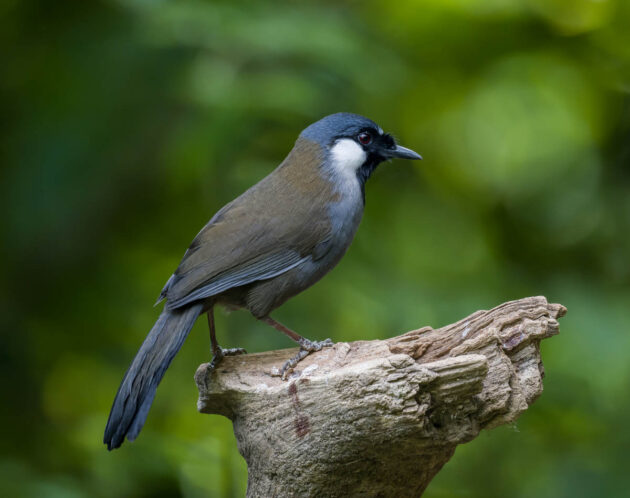
Below is a quotation directly from this paper by the Monitor Conservation Research Society:

“Trade data from the range countries of Thailand and Vietnam and from Indonesia and USA, both non-range countries, revealed 10,841 Black-throated Laughingthrushes in trade, across 762 visits to 51 markets between 1966 and 2019. The majority (63%) were recorded in locations outside the species’ range. Interesting too was that the prices were highest in the USA and lowest in Thailand, and that prices in Indonesia indicated high demand and increasing scarcity.”

The Black-breasted Thrush has the somewhat misogynistic scientific name dissimilis – why misogynistic? (Rhetorical question, I do not expect an answer from you).
Apparently, the dissimilis (“unlike, different”) refers to the difference between the male and the female of the species.

And in the HBW, Edward Blyth is quoted as stating that he finally saw “a male, which, as I all along suspected, proved to be clad in not quite so homely a garb as his mate. The male is, indeed, rather a handsome Thrush.”

No such differences in the Blue Whistling Thrush, though the HBW still states that “Female is similar but duller”, which refers to the color rather than the IQ of the bird (I hope).

The HBW entry also has a nice example for an ornithologist saying the word “bullshit” without using any swearwords: “Race flavirostris [a subspecies] has been considered possibly to merit full species status, but basis for such a separation unclear”.
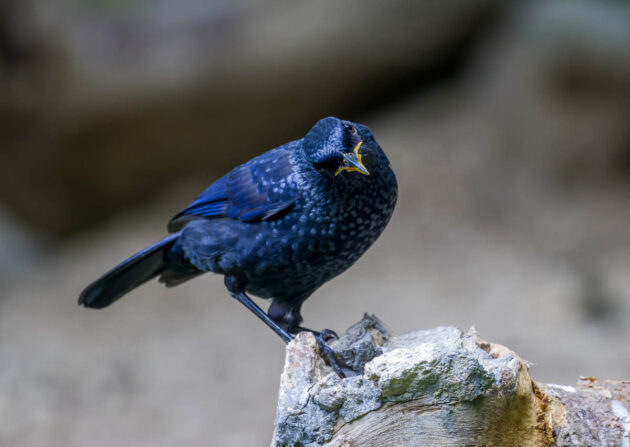
At Hongbenghe, some Blue Rock Thrushes apparently suffer from delusions of grandeur.


Yes, I know it is getting a bit boring, but the scientific species name of the Rufous-headed Parrotbill, bakeri, honors yet another British ornithologist, Edward Charles Stuart Baker (1864-1944).

Wikipedia reports that he “was an excellent tennis player and an enthusiastic big game hunter. He lost his left arm to a panther …, was tossed by a gaur [an Indian bison] and trampled by an Indian rhinoceros during various hunting expeditions”.

He may also have been a bit of a fraud, according to Wikipedia: “Some of the nest and eggs in his collection have been considered as of dubious provenance and there are suggestions that he artificially made up some of the clutches. Some like Charles Vaurie have considered it so unreliable that they even suggested the destruction of his egg collection.”
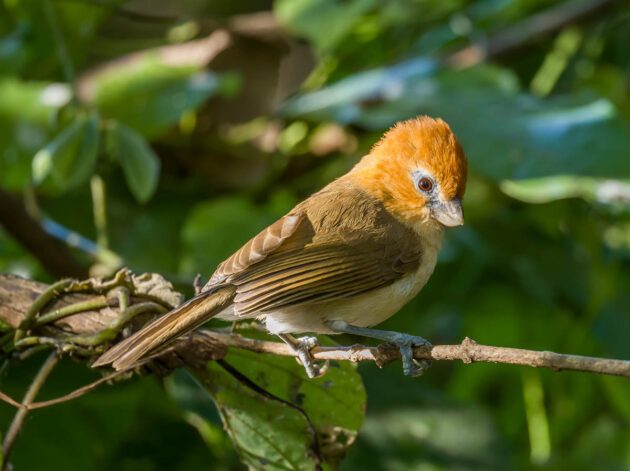
Well, at least he was not involved in the slave trade.

The Pale-billed Parrotbill looks somewhat similar, and I only got bad photos of it.

But the black eyebrow also highlighted in its scientific name of atrosuperciliaris (“black eyebrowed”) differentiates it from the previous species.

Why anyone would want to name a bird species – in this case, the Rusty-fronted Barwing – after a paleontologist is beyond me, but it happened.

The poor species has the scientific name egertoni, after Sir Philip de Malpas Grey-Egerton (1806-1881), who was not only a paleontologist but also a conservative politician (says Wikipedia, not me).

Most of us at some point in time have wondered about the gut microbiota of Silver-eared Mesias. Specifically, we are all particularly interested in the microbiota of birds living in a mining area.

Fortunately, some people do not just think about this issue but act. The result is a recent paper titled “Comparison of gut microbiota between immigrant and native populations of the Silver-eared Mesia (Leiothrix argentauris) living in mining area”.


This Streaked Spiderhunter seemed to be obsessed with cleanliness – the German word would be “Waschzwang”, which in English is something like “washing compulsion”.

Why that? One paper may provide an explanation: “A new species of the feather mite genus Analges Nitzsch, 1818 (Acariformes: Analgidae) from the Streaked Spiderhunter Arachnothera magna (Passeriformes Nectariniidae), with a renewed diagnosis and world checklist to the genus”.

I would also take lots of showers if I had feather mites.

Or maybe it just enjoys taking showers.

And yes, similar to the long novels of Leo Tolstoy and Fyodor Dostoevsky, the lengthy title of the paper comes from a Russian scientist.
Finally, a few species just as photos, without any annoying information (this is the excuse – in reality, I am just tired of searching for information):
Velvet-fronted Nuthatch …

…. White-tailed Robin …

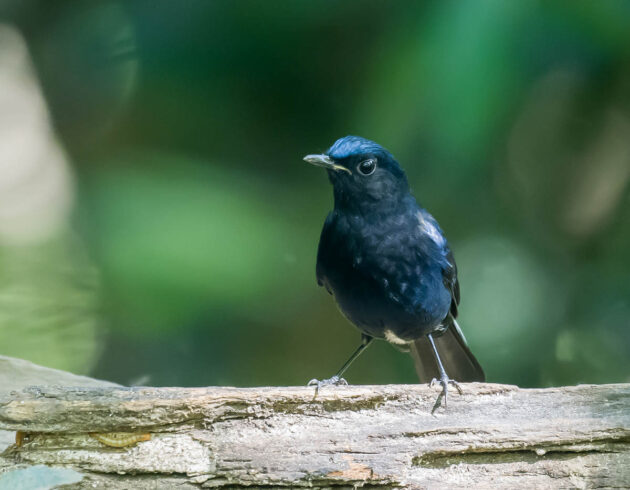
…. and White-throated Fantail.

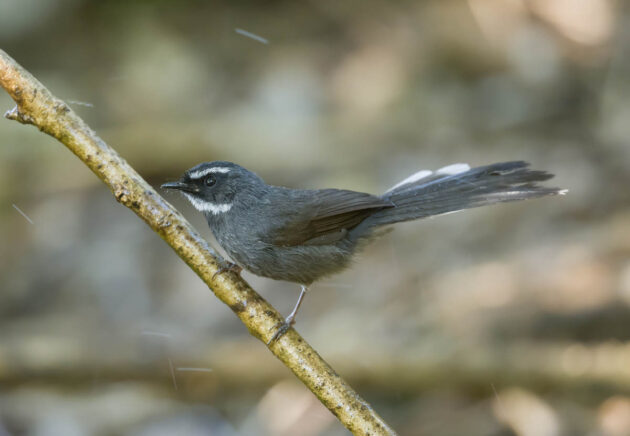

Source link

